Last Updated on May 10, 2021
There are places that beckon you with just their names. When you fan out a map before you or twirl the globe around, it’s possible that some names catch your eye and imagination. Ranthambhore does that…ever so tantalizingly.
In the month of December 2007, we decided to go to Ranthambhore National Park. The mention of visiting a wildlife sanctuary was always accompanied by a raised eyebrow and a word of advice. ‘Visiting a sanctuary!!. Go to a zoo instead’.
However, I wanted to go through the whole jungle experience, breathe in the jungle air, listen to those sounds you would never listen to outside a jungle, and if lucky see the King and his people in their natural habitat.
When the option for a three-day outing came up, we had always wanted it to be a wildlife park. We had read up on Ranthambhore and we knew that Ranthambhore was a rare combination of nature and history coming together, what with the flamboyant Rajasthani royalty leaving its impression in the form of an impressive fort bang in the middle of a dry, deciduous forest with a high density and variety of flora and fauna alike. It is also one of the few reserves where tiger sightings were still a possibility – as we were about to discover.
Ranthambhore
Named after the Ran and Thambhore mountains and situated 14 km from the Sawai Madhopur railway station, Ranthambhore National Park spans over 392 sq km of area.
Day 0
Our journey began on a December night at a crowded platform of New Delhi Railway Station. Amidst the clatter and wheezing of train compartments, the world and his wife and their countless children and luggage were in various stages of an endless journey to someplace.
A little after the scheduled arrival time (Dehradun express was coming from Jammu Tawi – up in the north of India), we had boarded and occupied our berths for a short night’s sleep. Sawai Madhopur was out there, somewhere, in the thick of the night and we knew we had to sleep easy if we were to wake up, grab all our bags and get out in the cool of a Rajasthani dawn. So a few hours delay in departure gave us that much extra time to catch our sleep – though we kept dropping it, out of fear that we might end up waking up at Kota further down!
Day 1
Just after six, the Dehradun express pulled into Sawai Madhopur station, a modest but pretty affair in red bricks. When we got out into the freezing cold of the red-bricked Sawai Madhopur station from the comforting air-conditioned railway coach of the Dehradun Express, we didn’t know what to expect. Somewhere on the other side was another world, totally unknown at the present. It was a new morning, a new beginning. I was about to venture out into the jungle for the first time.
We shivered in the chill of the morning only to warm up as we spotted our names on the signboard of the hotel we were to stay for the next few days. The gentleman who had come to pick us up – also the chief naturalist at the resort – had been waiting since 5 am in the cold.
We drove to the resort and passed many other familiar names on the way, names that we had seen and researched on the web were now manifesting themselves in brick and mortar. The hills rose out of a thickly wooded horizon under which, we knew, lay wild and historical Ranthambhore.
Tiger Moon
Our stay was at a nice enough resort on the fringe of the jungle, just two kilometers away from the park’s main gate. Madhopur owes its survival, primarily, to the big cat – so could do well to reciprocate by ensuring that of its benefactor. Every resort here is Tiger this or Tiger that and ours happened to be Tiger Moon.
Situated in a comfortably secluded area near Sherpur village, the delightful complex comprises of an array of pretty cottages. We checked into one of them and got ready for breakfast.
The resort was up and about by then and we noticed that we were outnumbered with more foreign tourists around than Indians. We struck up a conversation with an elderly British couple who could not wait to sight, among other wildlife, the Royal Bengal Tiger.
By the time we were through with breakfast, we saw a Canter (a large van that seats about 25-30) arrive with a group of foreign tourists draped in muted colours and brimming with excitement. That must have been the group that caught the morning safari and they shared with the others how they were surprised by a tiger crossing the road in front of them and disappearing into the woods.
We had two free safaris in our package and we struck a rare and welcome gold with our first outing. Ranthambhore, we were told, is highly regulated as against other reserves with regard to entry guidelines.
The park is divided into five zones and each zone can take in only four Gypsys (a small, but very handy jeep, has to reserved well in advance and is much costlier) and four Canters. Safaris happen just twice in the day – early morning and afternoon. We were slated for the afternoon one and, hence, had the morning to ourselves. The hill outside the resort looked quite inviting and we decided to take a nature walk, accompanied by a naturalist.
Nature walk
We walked out of the resort towards the nearby hills. There was an ancient temple on a hillock and we decided to take a small trek up. The view from up there was panoramic. On the other side lay the Ranthambhore range, encompassing the park. At 275 sq. km, this is the smallest tiger reserve and, hence, has a better record at sightings. Thanks to the tireless efforts of park officials and well-meaning locals, the reserve has a decent population of most animals. But the man who really has contributed the most to Ranthambhore in terms of tiger and jungle conservation has to be the legendary Fateh Singh Rathore, who has worked all his life in this forest – and continues his passion and efforts till today.
We returned back to the resort for lunch, excited about our first safari in Ranthambhore, later that afternoon.
Our first safari
A Maruti Gypsy ferried us to the park gates and we found a veritable mela there. There were Canters and Gypsys lined up brimming with people, mostly with foreigners. A four-hour safari in a Canter costs approx. Rs.500 per person, whereas the Gypsy ride can set you back by Rs.1500/-. There was a flurry of activity with tourists, guides, and forest officials all buzzing about. And the hawkers trying to hard-sell their wares, t-shirts, caps, jackets, wildlife books etc. only heightened the sense of animation.
Sharp at 3 pm, the Canter began rolling, and we were in business. It didn’t take long to get the feel of the wild. The hilly terrain; the dhok trees in an eternal state of tandav; the dry, sepia tint to the forest; and the sight of the old Fort, the park itself is breathtaking and sets the tone for the thrill of wildlife encounters. The prose of the jungle and the poetry hidden in the ruins come together to form a rare body of work that is nothing short of a bestseller titled Ranthambhore.
For the first one hour, it was more a ride through some uncomfortably dusty and bumpy jungle path till the guides in our Canter (they are actually naturalists, with their thorough understanding and knowledge of the jungle and its inhabitants) read the frantic calls of some chitals correctly. What followed was a virtual traffic jam, with vehicles and the passengers inside, each jostling with one another to get that better view.
And the Tiger
What followed for the next one hour was stone-dead silence – you could even hear the pounding of your heart between all those incessant clicks of all those cameras working overtime to capture the moment. The tiger in front of us was a female which was working on a kill she managed the same morning. What was on the dining table was a nilgai, or whatever was left of it. After half an hour of eating its fill, it got down to some thorough cleaning and grooming, followed by some playing around and rolling in the dust. And all this while, it never appeared to be disturbed by the presence of eight vehicles and one hundred humans. The only time it showed its irritation was when a bumbling wild boar clumsily strayed in uninvited for lunch!
The only downside of carrying a camera to a wildlife reserve is that it takes up your complete time and attention. And we are not even talking about caring for the equipment – to avoid dropping or banging it, keeping out the dust, the moisture etc. etc. It’s your preoccupation with getting the perfect, special shot that often gets in the way of your taking in the scene, the characters in it, and the overall drama.
After feasting our eyes for close to an hour on this ultimate wildlife spectacle, we didn’t need anything more. Most were silent during the drive back. The romance of sighting a tiger is many things – not least a realization of the incredible luck that can come your way.
Dinner was a happy event. Of course, the food was great, but what really whetted our appetite was all the attention and envy we got from fellow diners – they had, by now, got to know about our luck!
Day 2
Having chosen to sleep early, we were up at around 4 am for the morning safari.
Zone 5
Before long, we were ready and waiting for the jeep that would drop us at the park gates. And, by 5 am, we were seated in the Canter, looking the part with our muted colours blending in with the wild. But as we were about to experience, the rest of our stay had little to do with tigers in flesh and blood (pun unintended). This safari, that took us to Zone 5, was generally pronounced a letdown…if tiger spotting were to be the only yardstick of a successful safari.
The park is, incidentally, divided into five zones. Once you have driven past the Fort and through the doorway near a 200-year-old banyan tree, the forest sprawling in front of you is demarcated zone-wise, with the area on your right being zone 1, the one next to it (anti-clockwise) zone 2. The expanse in the middle (this has the lakes and thereby the maximum wildlife) is the most popular and sought-after zone 3, followed by zone 4 and, finally, zone 5. It’s the Forest Department that does the scheduling of where your vehicle is headed – so it is purely a matter of luck. But, just as zone 3 need not guarantee sightings, you might even strike gold in the other zones – as we did on the first day.
The full impact of the luck we had on the first safari only dawned on us after the second and a paid third failed to yield any sighting. But that is precisely the mistake that most make when they visit a tiger reserve. If you let the tiger be the centre of your wildlife universe and you make tiger spotting the sole objective of a visit to a reserve, the chances that you will get disappointed are much more than sighting the big cat! What really makes it worth the while is just taking in the jungle, its many varied animals, the birds, the trees, the topography…well, just the feel of the wild!
Treepies
Coming back to Zone 5, there was nothing wrong with the jungle per se. There were enough and more sightings with copious numbers of langurs and birds on offer. But what remains etched in memory was the enthralling meeting that we had with some very friendly Indian treepies that flew down onto our palms to make a meal of some biscuit crumbs we held in them. Just seeing them, resplendent with their colourful plumes and long tails, was enough for most to whip out their cameras and binoculars. But there were more surprises in store. All it took was a few biscuit crumbs and a palm to hold it, and, down they came flying for a meal. Between the ticklish pecks and the mild pain inflicted on our palms, the joy of having such a beauty of a bird get so close and personal was, in itself, a fulfilling wildlife experience.
Mansingh Sanctuary
With two full days left and an unbelievable tiger sighting already under our belt, that afternoon we decided to walk the path less trodden on. Mansingh Sanctuary, about 30 km away from its more famous cousin, is a much less frequented spot. While on spots, the star resident here is the leopard. This rather shy cousin of the tiger is as elusive as they can get.
Our guide told us that they often saw leopards on the hill outside our resort…and that one had even dropped into the resort to the poolside to get a drink. Not much luck in Mansingh – actually, we seemed to be the only ones visiting this poor cousin of Ranthambhore. Great terrain, though, and the sunset there was particularly captivating.
Besides the animals, Ranthambhore takes great pride in its many ruins scattered all over the area which, actually, comprises of the Ran and the Thambore ranges.
Ranthambhore Fort
The most prominent historical spot is the 1000-year-old Ranthambhore Fort that belonged to the Chauhan dynasty till Allaudin Khilji took over. Overlooking the entire park which used to be the hunting ground of the rulers of those days, the fort holds its own before the stunning vistas of the forest.
Trinetri Ganesh Temple
There is also a Trinetri Ganesh (a three-eyed form of the beloved Hindu God, Ganesha) temple inside the fort which is a big draw for devotees and tourists alike. The idol is said to be a swayambhu, a self-manifested formation, supposedly natural and not man-made. If nothing, the incredible number of langurs hanging on around makes the visit worth the effort. Our guide told us that former Indian Prime Ministers, Indira, and Rajiv (Gandhi), had visited the reserve just months before their respective assassinations. Apparently, neither of them `thought it important to pay’ a visit to the temple… Incidentally, while we were there, Priyanka (Rajiv’s daughter) too did drop in at the park. Not sure if she thought it `prudent’ to pay her obeisance to Lord Ganesh!
Zone 3
The third safari, however, was more of promise, but also a reiteration of that important tenet of wildlife tourism – the tiger is the centre of our wildlife world, but it’s not everything. Those 3-4 hours proved it in no uncertain terms. The awesome landscape that was around us and an incredibly high variety of wildlife was a treat in itself. The closest, maybe, we got to spotting the big cat was a fleeting glimpse of a jungle cat in the bush on the fringes of the Rajbagh Lake. We all hung around the lake for as long as was possible. Lots of other animals (spotted deer, sambhar, nilgai, langurs, antlers, crocodiles, wild boars, plenty of species of birds, peacocks and rabbits) and even a fleeting glimpse of 2 jungle cats (something halfway between a cat and a tiger) inside the grasslands on the edge of a water body. There are three lakes in Ranthambhore, all of them in this zone (which everyone seems to want to be in) and given the dry nature of the forest, all animals frequent the area which, in turn, draws in the predators too.
Day 4
Next morning we went for a nature walk, all on our own. We walked up to the hillock, passing the pond, checking for any telltale reflections on the surface to see if there were any crocs beneath it. From the top of the hillock, the sight is tremendous. From the temple on the hill we had visited the first day, now behind us, to the park itself on our left and the resorts dotting the landscape ahead, the railway line before us coming in from the right, and finally, our resort just behind us, the 360 degree view was best captured in the mind and saved for posterity. Even with so much around us, and so much happening before us, there was a strange, peaceful silence that hung in the air. We stayed back to take it all in till we realized that we would have to be on one of the trains that will be coming down that track, from the west.
We checked out before noon, just in time to catch the Golden Temple Mail that reaches Sawai Madhopur station at 1235hrs. It’s just ideal as you arrive back at Delhi by 1900hrs.
Epilogue
Back home, in the city, as we sit flopped before the television set, alternating nostalgically among the National Geographic, the Discovery and the Animal Planet channels, taking a virtual safari, we start suddenly and mute the volume. What was that noise? Was that a footfall on the grass or did we just imagine it?
Getting there
Air: The nearest airport is in Jaipur, which is only a four-hour-drive from Ranthambore. Jaipur is linked to the major cities like Delhi and Mumbai.
Road: Unless you are based out of Jaipur or Kota, driving down is not a great option – of course, if you love driving, it’s a different matter! There are 2 routes from Jaipur – one via Tonk and the other through Dausa. The latter is about 10 km longer but the road isn’t that great.
Rail: Clearly, the best option, especially given the fact that Sawai Madhopur is bang on the Delhi-Mumbai route. It’s just an overnight (about 7 hrs) journey from Delhi. It’s much cheaper and simpler than driving or flying to Jaipur or Kota and catching a cab.
Notes
- The best time to visit Ranthambhore is from November to February. March to May can get very hot. The park is closed during the monsoon months of July, August, and September.
- Do make sure that your resort has made bookings for you in the Canters, if not the more expensive Gypsies. With only 2 safaris a day and limited seats, you wouldn’t want to miss going into the jungle after reaching Ranthambhore.
- The abundance of other animals, and more importantly, the terrific landscape is something you should cherish.
- Don’t give Mansingh Sanctuary the miss. You may not see the elusive leopard population, but the forest and the sunset are a must see.
- Give the fort and the surrounding area its due. You won’t find many wildlife parks in the world with so much heritage and historical character built in.
- Try and get on to the Canter/Gypsy that is headed for Zone 3 – where the lakes and, hence, the possibility of sighting is higher. It’s not really an individual choice and you are at the mercy of the Forest Department’s scheduling, but maybe your resort can try and help you. However, don’t get too stuck up on this, or despair, if you fail to make it. Let me remind you that the one-hour tiger sighting that I mentioned above happened in Zone 2, and we failed to sight one in Zone 5.
- If you are coming from Delhi, take the Dehradun express (9020) as we did. A late evening departure and an early morning arrival are ideal. For the return journey, you can check out just after breakfast and be driven to the Sawai Madhopur station in time to catch the 2903 Mumbai-Amritsar GoldenTemple Mail (12.35 hrs) which reaches Delhi by a comfortable 19.00hrs.


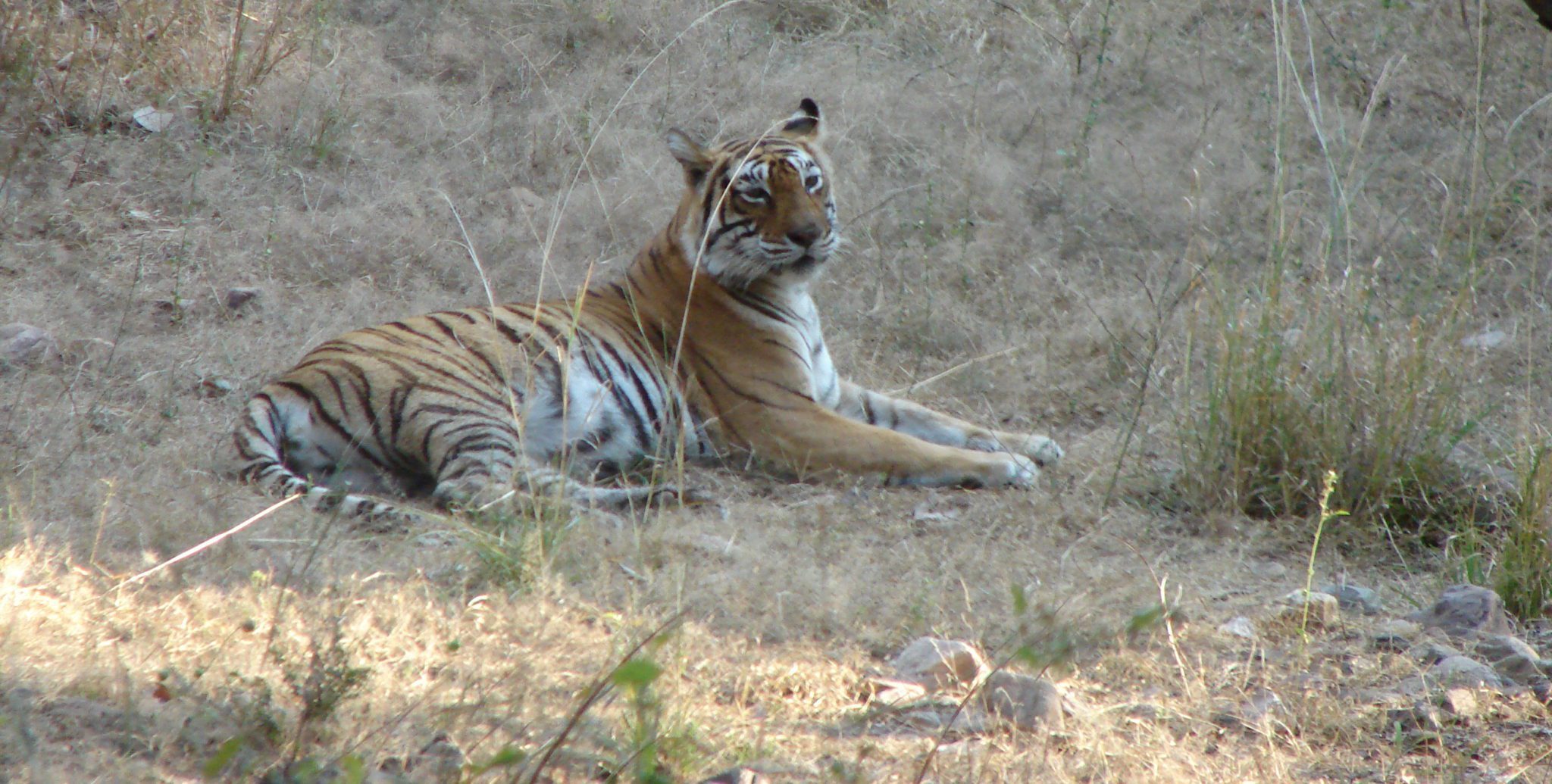
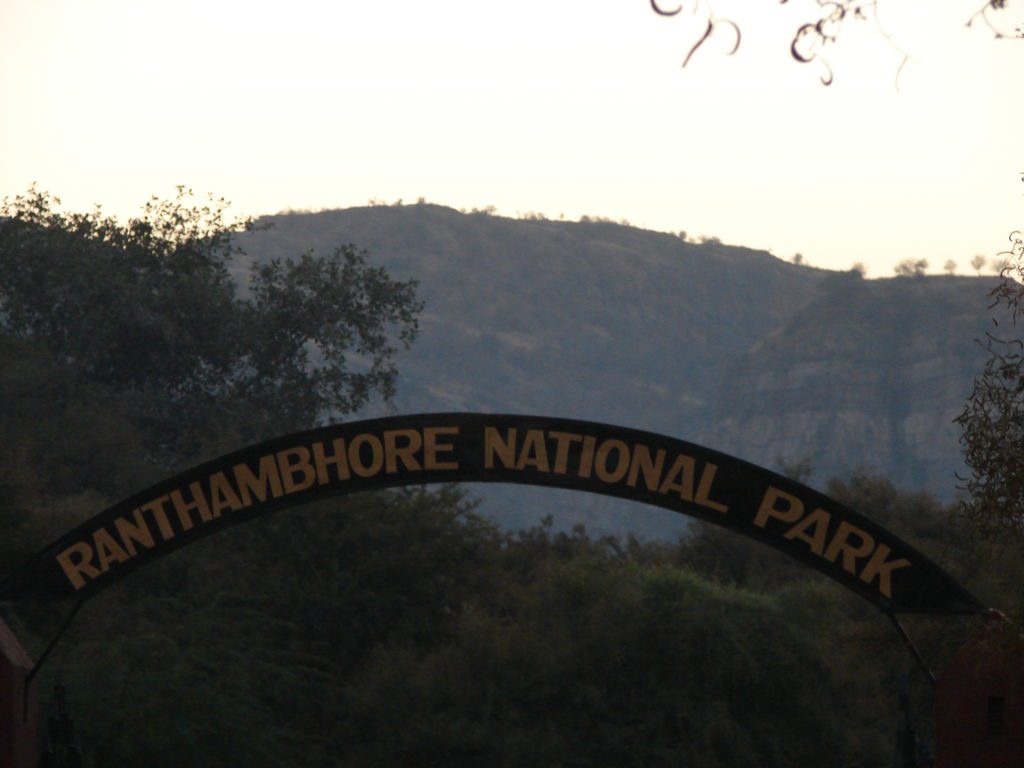


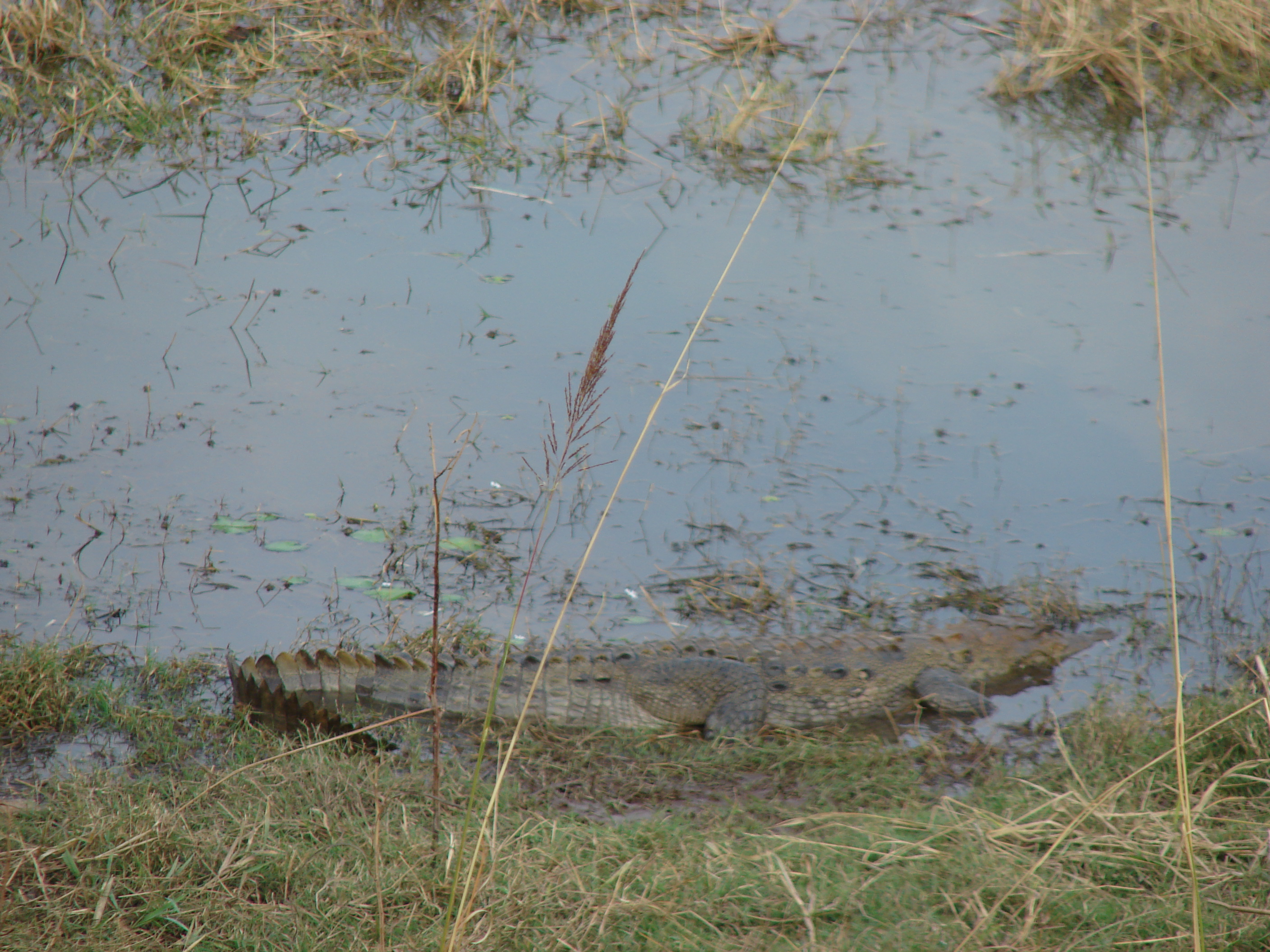

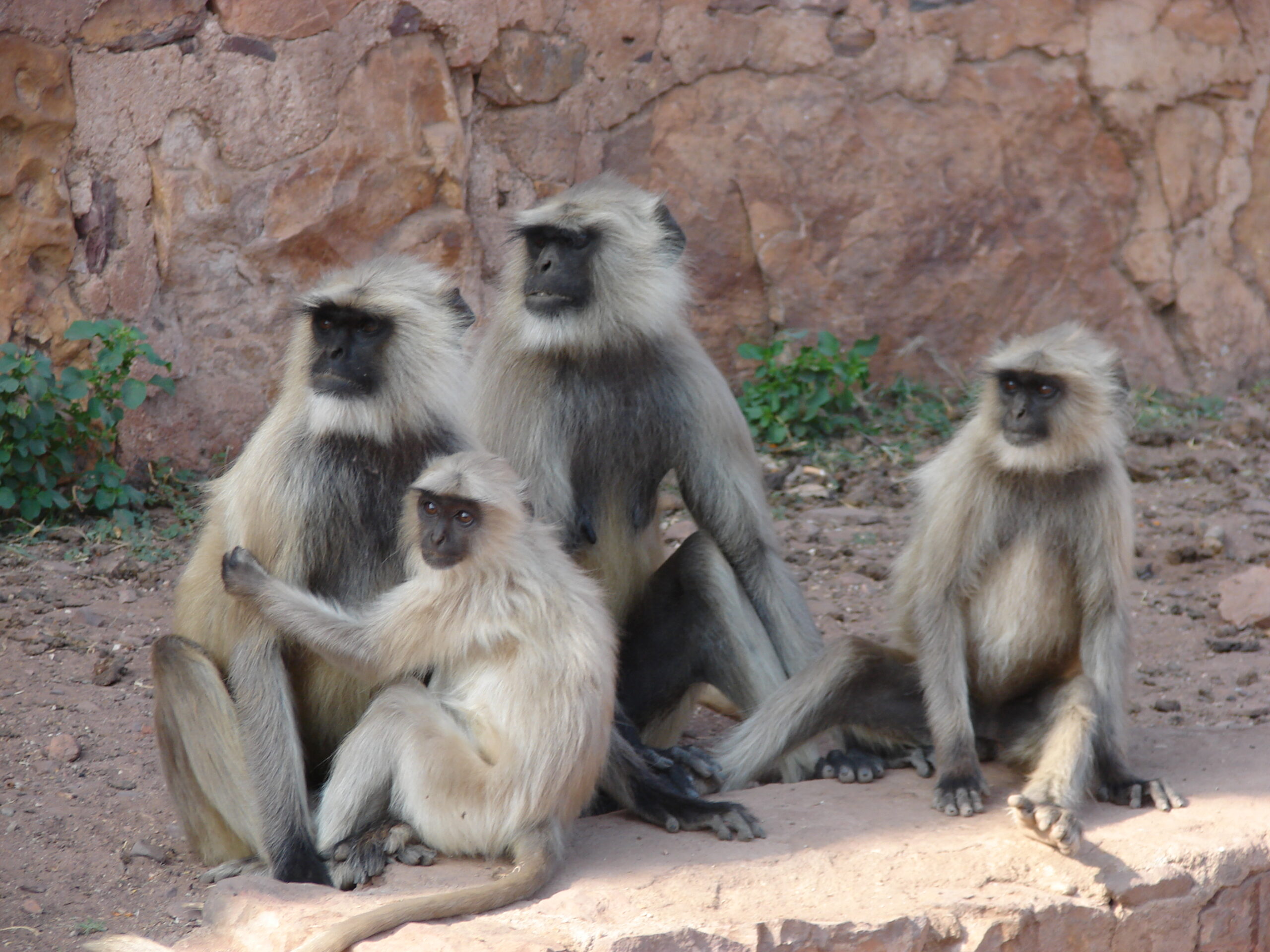
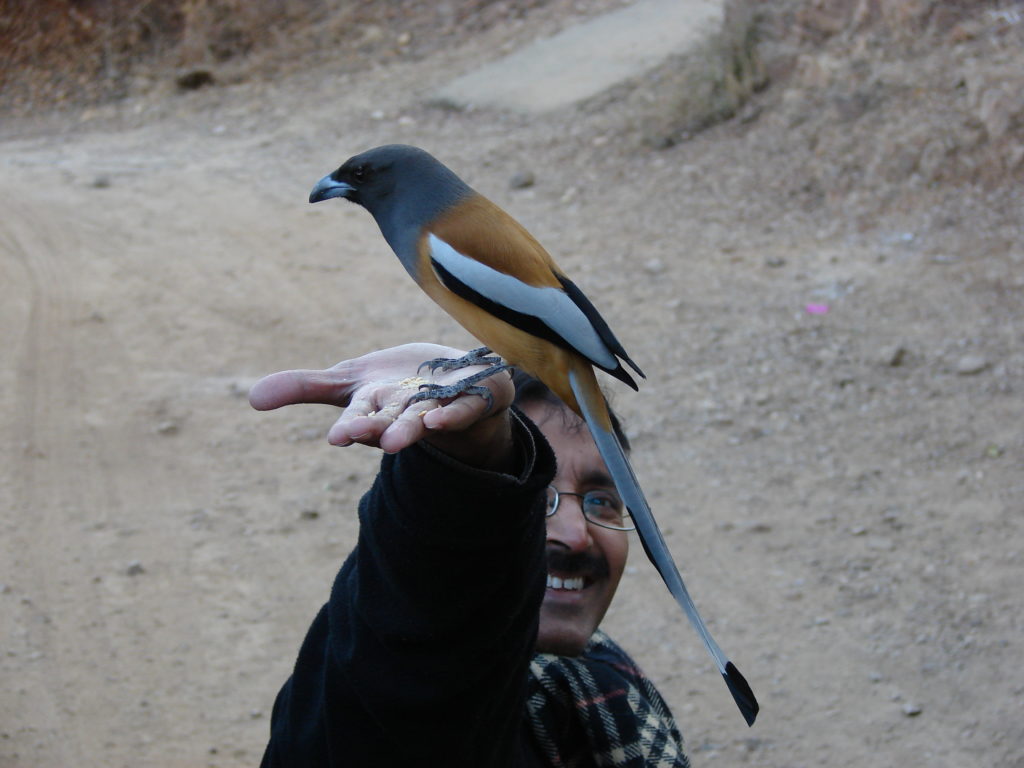
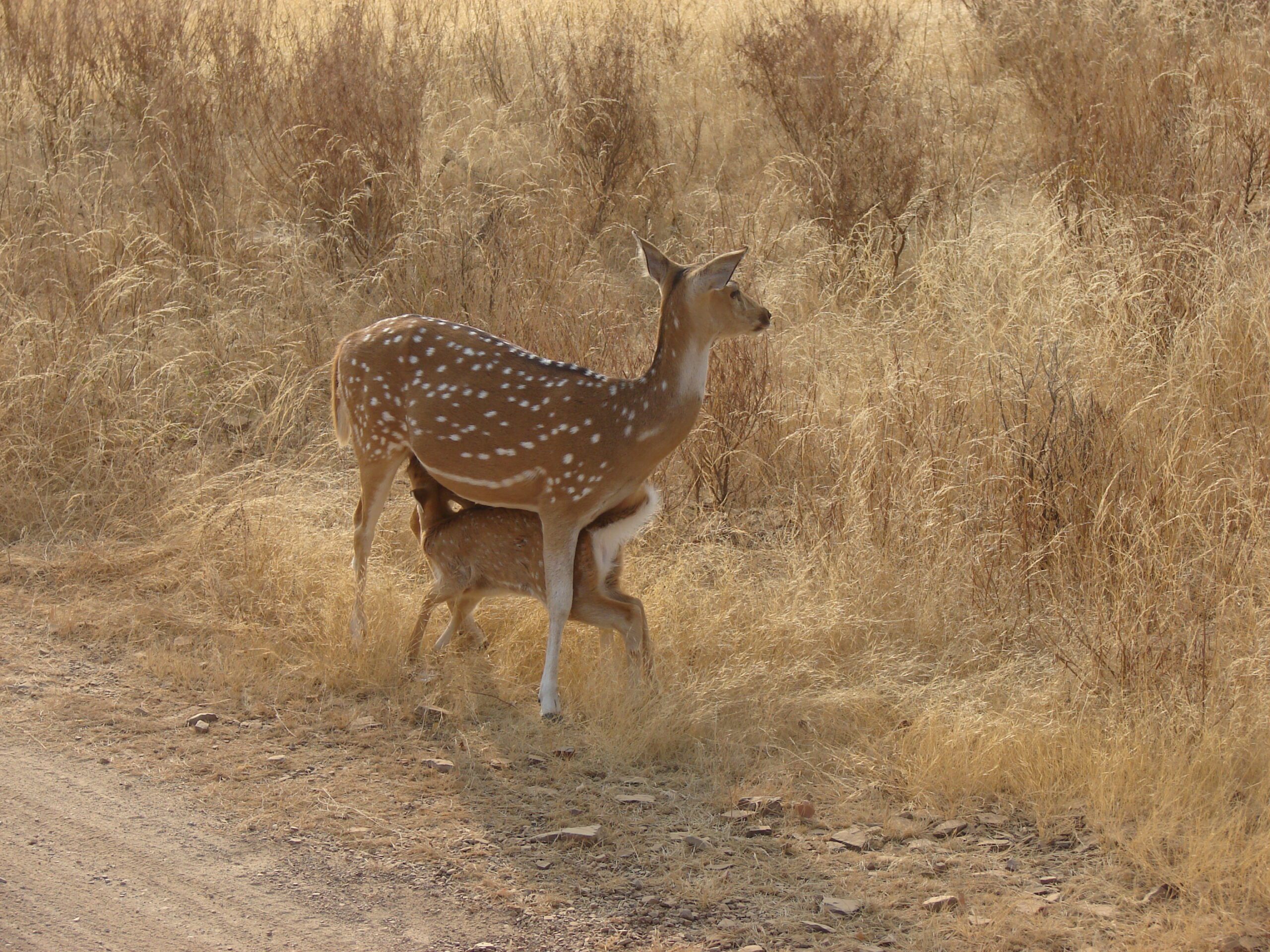

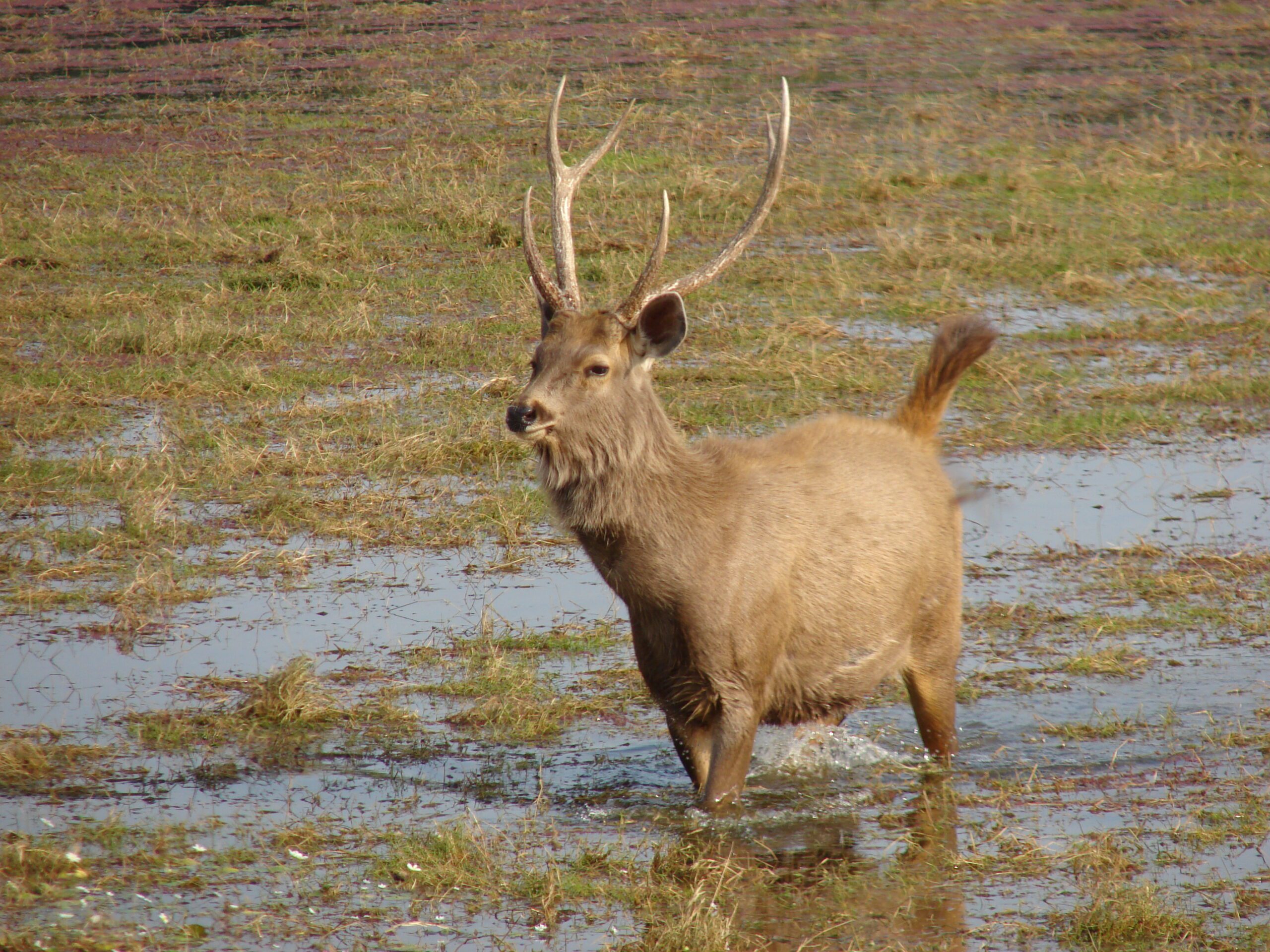



3 Comments
Ah the friendly treepies of Ranthambhore. They really shocked me for the first time when one decided to land on my head. 🙂
Cheers,
Kartik
Your posts are always so informative and interesting to read.. This time it felt as if you had to stop abruptly…You didn’t write about the first jungle experience…
Yes, I know. We had already blogged about the trip on another portal, so kept this one short.